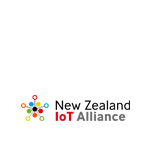Globally, New Zealand is in the fortunate and enviable position of recently moving from Level 2 to a ‘new normal’ of Level 1 lockdown restrictions. I say ‘new normal’ as many of us are still working fully, or partly, from home.
Reflecting on this new normal I wonder how the post COVID-19 world will look and what the impact of technology, particularly the Internet of Things (IoT) will have in this new normal.
According to the IMF, the impact of COVID-19 on the world economy is going to be far greater than initially expected.
Closer to home, Auckland Council is facing a revenue shortfall this coming financial year of around $525 million and have opened a consultation process with its rate payers for feedback on how the shortfall should best be managed going forward. All NZ and Australian councils are likely to face similar shortfalls in upcoming budgets which forces big questions around which services are essential to maintain and which can be cut.
As these big questions are posed, it will be increasingly important to consider the savings, operational efficiencies and risk management opportunities that the right technology, such as the IoT, can deliver councils and businesses alike.
Unfortunately, in times of economic pressure, the easy answer to cut costs is to simply retrench teams and/or shut down technology initiatives. These are familiar solutions to familiar problems in a familiar world. But the post COVID-19 world is anything but familiar. Investing in innovation and new technologies is far more likely to progress how effectively councils and businesses will operate from this point forward.
Like it or not, part of our collective new normal appears likely to demand that we find ways of living with COVID-19 in our communities. For councils and business, that means preparing to effectively manage operations through future pandemic outbreaks. Operational effectiveness increases manifold through enabling remote asset management, remote working by employees and sensors to improve downtime and efficiency. The benefits have already been proven: safe, flexible work practices for employees, better visibility across an enterprise, improved operational efficiency and greater asset utilisation.
As Patrick Sieb, one of Thinxtra co-founders, recently posted on LinkedIn, “… digitally ready companies transitioned more seamlessly to the virtual working model and are generally better positioned for recovery. Similarly the ability to remotely monitor assets and other ‘things’ across geographies proved invaluable for companies with large numbers of assets. Letting people go and reducing expenses and investments until things start picking up again. But that is reactive, inefficient, slow and unlikely to position companies for an upswing.”
Some forward-thinking councils have already implemented intelligent Internet of Things solutions to accelerate digital transformation and improve citizen service. Smart street lights enable remote monitoring to detect faults, thereby reducing downtime and power consumption, and introducing flexibility with adaptive lighting that brightens when movement is detected. Smart rubbish bins send multiple daily reports on accumulated waste levels to reduce overflow, reduce CO2 emissions, drive more efficient collection cycles and reduce operational costs (in some cases up to 60 per cent savings).
We’re seeing a faster progression to the deployment of IoT-connected gas and water meters so that real- time data is delivered to central platforms to improve decision-making. This provides multiple benefits for councils, companies and their customers, including safe, flexible work practices for employees, reduced human error, quick identification of faults, greater visibility for customers on consumption via apps and enabling remote meter reading. These positive operational outcomes are easily achieved by retrofitting existing assets with a low- cost IoT solution able to run for 10 years on a single battery, which delivers rapid ROI. These examples help illustrate that IoT solutions have well and truly moved beyond the ‘test and learn’ experimental phase to full-scale solutions deliberately designed to solve business problems. The likes of DHL, Michelin, Sanmina, Hudl, Land Rover, Qantas and more are already using IoT to improve efficiencies, the customer experience, competitive advantage and to reduce operational risk and costs. Transforming operations for good.
With many organisations running just as effectively virtually during lockdown, as they did occupying physical premises, businesses and councils are re-evaluating office space needs and modelling how to cut lease costs by downsizing office space. This means there are likely to be more employees than office desks and parking spaces available, which is driving the uptake of smart desk occupancy sensors and smart parking sensors. Such solutions enable employees to use apps to remotely monitor real-time information about available office desks and parking spaces. The benefits are clear: detailed reports on office and parking spacing utilization means employers save on real estate costs, reduce the organization’s carbon footprint and ensure business continuity, while providing a safe workplace for employees.
As much as none of us want to contemplate a future peppered with crises, it is likely more will occur. To support employees, customers and communities, councils and companies need to prepare for those crises today. The worst strategy in this unfamiliar situation to manage cost against future crises is either to use familiar cost cutting methods, or to take no action at all. Technology and innovation will help us survive this global crisis and any that follow. Recovering from COVID-19 has given us an opportunity to re-visit, and accelerate, how we choose to manage our business assets and operational processes.
Traditional technology vendors and telcos, accustomed to smoothly packaging products and services at scale to meet a clear customer need, often struggle with IoT. It is the new generation of device-to-cloud IoT providers, those ‘born’ in IoT, who design and deliver commercially attractive, operationally sound industrial IoT solutions at scale. The right investments today in technology and innovation, including IoT solutions, will help ensure businesses and councils accelerate business recovery to achieve a better, safer, more sustainable future in the post COVID-19 new normal.
Written by Operations Director at Thinxtra and IoT Alliance Founding Board Member, Shaun McBride






